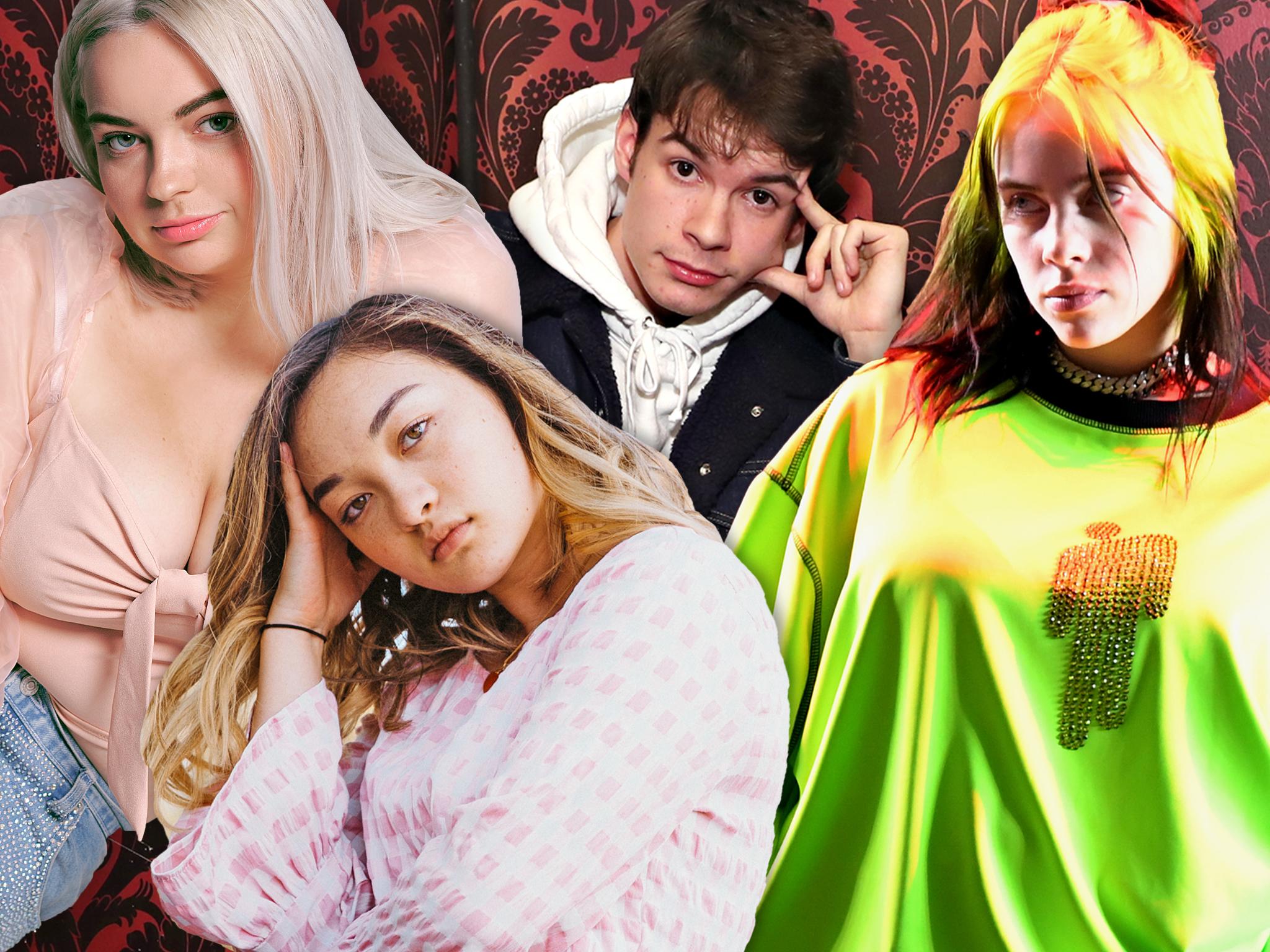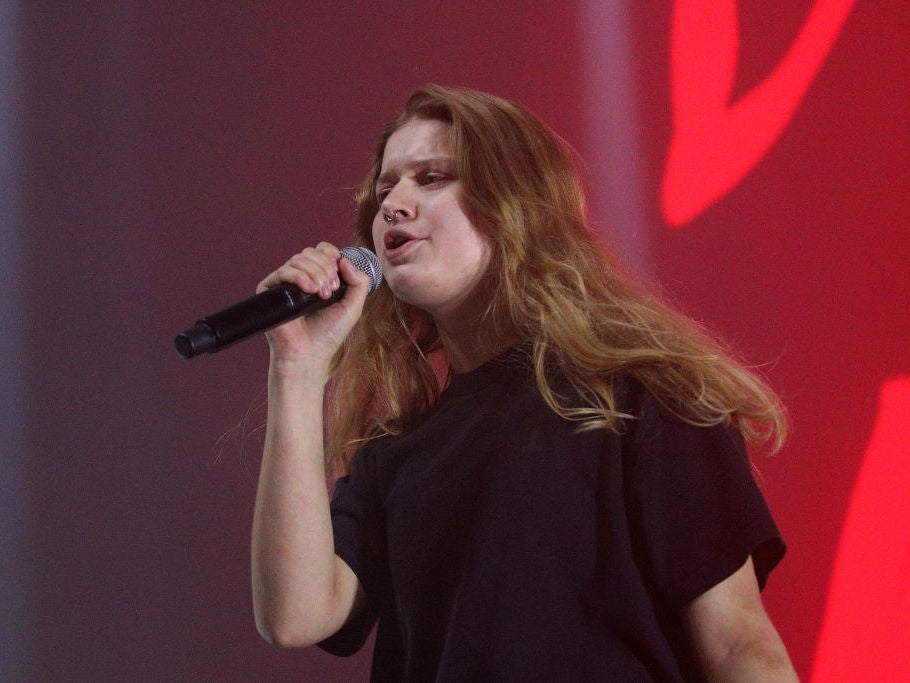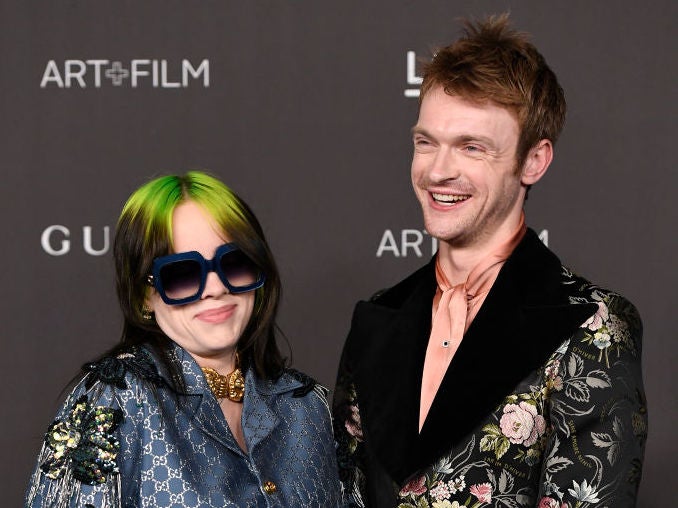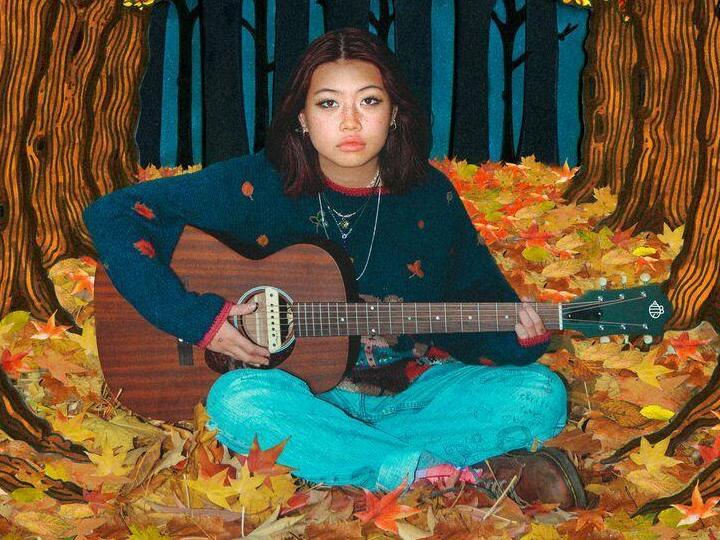How bedroom pop became the dominant sound of Gen-Y angst
Billie Eilish, Rex Orange County and Clairo are leading a wave of young artists creating woozy and intimate music from the privacy of their own bedrooms, bypassing traditional gatekeepers in the process. Ed Power asks: is this the future of pop?

As anyone who has ever been a miserable or misunderstood teenager will testify, the bedroom can feel like a sanctum from a cruel and relentless world. You slam the door so hard that the posters blu-tacked to the walls shudder and all your woes – your infuriating parents, teachers, friends, rivals, bullies – suddenly feel a tolerable distance away. This sensibility has now transferred to pop music, announcing itself with a hush that has reverberated like a roar.
“Bedroom pop” achieved semi-official status in 2018 when Spotify unveiled a playlist dedicated to the genre, featuring artists such as Rex Orange County (aka 21-year-old Hampshire native Alexander O’Connor) and Beabadoobee, the stage name of 2020 Brits Critics Choice nominee Bea Kristi. Within a few days, it had 5,000 subscribers. Today, it has in excess of 500,000. Navigating it can feel like slipping under the sheets of an unmade bed and discovering a portal beneath to sonic Narnia.
Like so much else in music in 2019, this new movement is the product of technological convulsions within the industry and in society more widely. Cheaper laptops have provided young artists with the tools to assemble songs of near-studio quality, without having to leave the house. And YouTube and SoundCloud allow songwriters to bypass the traditional gatekeepers, which typically include record labels, media, promoters etc, and connect directly with their audience.
“I really like being in my own space, walking around looking like a hobo in my pyjamas,” says Marie Ulven, a 20-year-old Norwegian songwriter who, as Girl in Red, is among the leading voices in bedroom pop (she is starting to tire slightly of the tag). Ulven is one of the big draws on the Spotify playlist and racks up nearly four million monthly listeners in her own right. She toured the UK in October, playing to sell-out rooms of fans often delighted simply to breathe the same air as her.
“It’s very natural and accessible,” she says of writing and recording in her bedroom back at her parents’ house in the small town of Horten (population 27,000), which she has done since her first single in 2017. “I have an idea right now and I’m going to sit down here and fiddle with the guitar and see what happens.
“Bedroom pop artists are difficult to define by a single genre or sound,” says Sara Sesardic, senior music editor at Spotify UK and Ireland. “They’re making lo-fi sounds, they’re writing about personal issues, and they’re often choosing to do this away from a traditional studio environment. In large part, this is an independent community that embraces the DIY approach to making music, while at the same time transcending the boundaries set by established genres like indie, rock, R&B and pop.”
Often woozy and introverted, sometimes strident, unfailingly fascinating, bedroom pop radiates otherworldliness while wearing its feeling on its (pyjama) sleeves. The artists, meanwhile, are often very young and skew female.
“In a recording studio a lot of time a girl or a woman could easily end up on the couch at the back rather than sitting at the [mixing] desk,” says Ulven “Girls can easily end up being the ones who sit and watch. They don’t do the software part as much as the boys. But I’m doing everything – including the software. Because no one else is here to do it.”
“Technology is such a godsend,” says Phoebe Lee Jasper, who records as Navvy (pronounced “Navy”) in her parents’ suburban Auckland house. “You don’t have to have every instrument in the room. It can sound like a full-on band and it’s just a guitar and a mini-keyboard. Anyone with a laptop can make a song. More and more people are giving it a go.”
Enjoy unlimited access to 100 million ad-free songs and podcasts with Amazon Music
Sign up now for a 30-day free trial
Enjoy unlimited access to 100 million ad-free songs and podcasts with Amazon Music
Sign up now for a 30-day free trial

“You don’t necessarily need access to a full recording studio, or a big budget, to record music and upload it for an audience to discover,” agrees Sesardic. “That freedom in taking the DIY approach is incredibly exciting and the results are incredible. For example, Clairo has over five million monthly listeners on Spotify, and Beabadoobee, fresh off releasing a Spotify Singles, is also on the list for the Brit Awards 2020 Rising Star.”
“Artists labelled as ‘bedroom pop’ have a younger skewing audience, sure, but to say the audience also skews female is a misconception,” she adds. “These artists are making music that relates to a far-reaching young audience, and it shows by the fact artists like Rex Orange Country can play to a packed audience at Brixton Academy for three consecutive nights. Being able to make music in your bedroom to playing Brixton Academy is an aspirational notion for anyone navigating their way through adulthood.”
Bedroom pop has already minted its first A-listers. Khalid has brought the aesthetic to arenas with music both intimate and horizon-filling. Rex Orange County breached the top five with this year’s Pony LP.

Megastar of the moment Billie Eilish, for her part, recorded her chart-topping album with her brother, Finneas O’Connell, in his bedroom at their family home at Highlands Park, Los Angeles. Coming to the UK in December, meanwhile, is the aforementioned Clairo, aka 21-year-old Massachusetts songwriter Claire Cottrill, who amassed 40 million YouTube views with the aggressively DIY video for her 2017 song “Pretty Girl”.
“Billie Eilish is a perfect example,” says Ulven. “She made her record with her brother and it’s super cool and super good. Bedroom pop doesn’t need to sound lo-fi and cheap.”
Eilish and Clairo have each forged an unusually strong relationship with their fans. Because it is typically homespun and confessional, bedroom pop can serve as an antidote to the fakeness of much of the online world (though Clairo had to withstand a backlash after it emerged her father was a prominent marketing executive with music industry connections).
Ulven says she is often lumped in with Clairo and King Princess, the alias of New York songwriter Mikaela Straus.
“I think it might be something to do with the feeling the music carries. That sense of authenticity. Claire has a unique and authentic way of being herself. In a world where the way we portray ourselves can be very distorted and weird, her portrait comes across very clear.”

“The internet and streaming services have opened up this whole new world of music discovery to a young audience who are super engaged in finding their new favourite artists,” says Spotify’s Sesardic.
The deeply personal and confessional lyrics of artists such as Rex Orange County appeal to young listener who respect an open dialogue around mental health, she adds. Everyone can relate to songs about love, loss and heartbreak, especially when there’s an authenticity to those lyrics.
But there’s a lot of ambivalence in bedroom pop too. Listening to “Alewife”, the first song on Clairo’s debut album Immunity, you can sense something is amiss. It’s in her voice, hauntingly layered in the style of her hero Elliott Smith, and in the slightly menacing guitar chords. Still, you wouldn’t necessarily guess it chronicled a rush of suicidal thoughts the now 21-year-old experienced aged 13 and the friendship that helped her pull through.
“It’s cooler to keep a mysterious aspect to you,” Billie Eilish told me when I spoke to her last year. “Putting everything out there for everyone to see is not unique. People who are trying to get famous – become known in some way – they put everything out there, so everyone can see it. ‘Here’s me, and buy me’. ‘I’m on sale, come get me’. You know, I’ve always been me. I’ve always done what I wanted, said what I wanted, wore what I wanted.
“That has nothing to do with who I was with or where I was,” she continued. “Whatever my fame is or whatever you want to call it... I don’t want everyone to know everything I do. They can know a part of it and be a part of it. It’s still my life, I’m still a human being. I don’t want to be everywhere all the time.”
Eilish became a sensation within the industry when it was reported last year that she had achieved one billion streams without releasing an album and, at that point, without a great deal of mainstream hype. She seemed as surprised as anyone. Because bedroom artists write at home and then send their music out into the world, the idea of a fanbase can feel incredibly abstract, says 20-year-old Oakland, California, songwriter Mxmtoon, who also goes by her first name of “Maia” (she chooses to keep her full name secret).
“I didn’t connect to the fact that I had an audience until I played my first live show in August of last year,” says Maia, who has just put out her debut album The Masquerade and, like Clairo, tours the UK in December. “It was crazy to me that there were people spending their money who would chose to come to a venue and listen to my music. That’s when it really hit me. I could connect those numbers on a screen to real people and real faces.”
Ulven is a bit over bedroom pop and would rather her music be received on its own merits rather than perceived as a component of a wider scene. Maia is more at peace with the tag.
“It definitely makes sense to me. It [speaks to] these DIY artists that are making music in their bedrooms,” she says. “You can’t really put a genre onto the music that is being made now in these tiny spaces across the world by various artists. But bedroom pop definitely catches the style and the aesthetic.”
Her songs are intense and intimate. “Prom Dress”, which has over six million YouTube views, is for instance about the insecurities she experienced struggling to fit into a new frock. “I was still a teenager when I started,” she says. “Teenagers are constantly wondering if people care about you. It was fun when all of a sudden I had these people who wanted to hear what I had to say.”

A recent New Yorker profile of Clairo hypothesised that the aesthetic of bedroom pop is a product of the circumstances in which it is made. “The angst and the noise of garage rock gave way to more subdued sounds, as young musicians began making the kind of hushed, internet-facing electronic pop that could be kept secret from adults, rather than weaponised against them,” wrote Carrie Battan.
That idea chimes with Maia, who, early on, kept her music and her YouTube videos hidden from her parents. Then an influential website hailed her the future of “bedroom pop” and she realised she needed to tell her family before they read about it.
“I woke one morning and checked my Twitter,” she says. “I had been mentioned by Hypebeast in an article about bedroom pop artists you need to listen to. I was excited for about 30 seconds. Then I thought, ‘Oh my God, this is a massive outlet, my parents are going to find out’. I went into the kitchen and said, ‘Mum and dad – I have to tell you something’.”
With a growing fanbase, it is easy to overshare, she says. That’s a lesson she has learnt incrementally. “I used to come back to my room at the end of the day and think, ‘Oh man, I feel so empty, I wonder why?’”. I was giving out so much of myself, there was nothing inside for me. It’s totally a lesson I am going to have to continue to grapple with.”
She describes her bedroom as a haven against the world. Long before she might have had the confidence to step on stage or go into a studio, it served as judgement-free zone in which to explore her identity as an artist. “I had this private space,” she says. “There’s a safety to it. But it’s ironic. You’re sending it out into the world for a huge massive audience. I like that juxtaposition between the two.”
Clairo and Mxmtoon both tour the UK in December; Girl in Red’s latest single is ‘Bad Idea’; Navvy’s new single is ‘Mad At You’
Join our commenting forum
Join thought-provoking conversations, follow other Independent readers and see their replies
0Comments